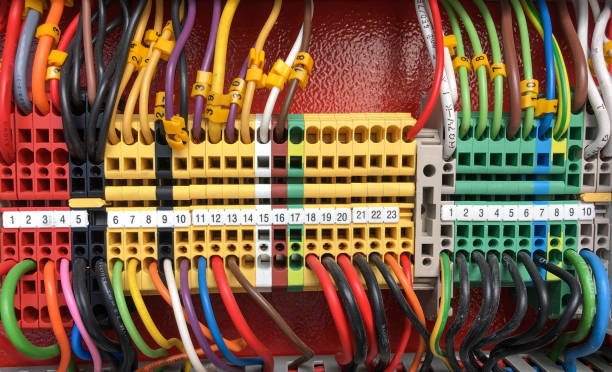In today’s digital age, effective network infrastructure is the backbone of virtually every business, providing the critical link between devices, data, and communication. As demand for faster and more reliable network services rises, the importance of expert network cabling installation cannot be overstated. This article delves into the best practices for network cabling installation, geared towards maximizing performance and supporting robust connectivity.

Introduction to Network Cabling in Canada
Canada, renowned for its vast geography and technological advancement, boasts an ever-evolving network industry that supports its growing economic landscape. Network cabling installation plays a pivotal role in this, ensuring businesses and individuals maintain efficient communication and data transfer capabilities. The significance of adopting industry-best practices cannot be ignored as organizations strive to improve speed, safety, and reliability.
1. Understanding Cable Types and Their Applications
Choosing the correct cable type is paramount to optimizing network performance. Categories of copper cabling such as Cat5e, Cat6, and Cat6a offer varied capabilities. With data transmission needs escalating, fiber optic cables present a compelling option due to their high bandwidth capacity and reduced signal attenuation. Understanding the properties of different cables ensures informed decisions tailored to specific business requirements.
| Type of Cable | Maximum Bandwidth | Typical Applications |
|---|---|---|
| Cat5e | 100 MHz | Basic networking, broadband internet |
| Cat6 | 250 MHz | Gigabit Ethernet, High-speed internet |
| Cat6a | 500 MHz | 10 Gigabit Ethernet, Future-proof installations |
| Fiber Optic | Over 1 GHz | Long-distance data transmission, High-demand environments |
2. Planning and Design Principles
An effective network plan begins with comprehensive site surveys to assess current infrastructure and future needs. At this stage, industry guidelines, such as those set by ISO and TIA, guide the design to ensure compatibility and optimal performance. Structured cable systems form the blueprint of contemporary networks, enabling modular expansion and troubleshooting efficiency.
3. Installation Techniques and Standards
Adhering to installation standards like ANSI/TIA-568 enhances network reliability and performance. Proper techniques such as maintaining appropriate cable bend radii, avoiding electromagnetic interference, and ensuring secure terminations are crucial. Skilled installation minimizes future maintenance costs and ensures a durable network setup.
4. Importance of Professional Installation
Network cabling installation requires precision and expertise. Engaging experienced professionals minimizes risks of errors while assuring conformance to safety regulations. In Canada, Prime Data Cabling Services are well-versed in the unique challenges of regional network environments, offering tailored solutions.
5. Testing and Certification
Post-installation testing is vital to confirm network performance. Certification tools measure various parameters like cable length, signal loss, and network speed to ensure standards compliance. Regular testing schedules also facilitate timely detection of wear or faults, vital for maintaining operational efficiency.
6. Ensuring Scalability and Future-proofing
With technology rapidly evolving, networks must be designed with scalability in mind. Implementing scalable infrastructures, like Cat6a or fiber optic systems, supports future technological upgrades without extensive overhauls. Scalability ensures businesses remain competitive and responsive to technological advancements.
7. Security Considerations in Cabling
Security is integral in network installations, particularly regarding data protection and access control. Measures include using secure cable trays, deploying encrypted data over fiber optics, and configuring network devices to detect unusual activities. These precautions help safeguard sensitive data against unauthorized access or cyber threats.
8. Maintenance Best Practices
Regular maintenance prolongs the life and efficiency of network infrastructures. Scheduled inspections, timely repairs, and updates to network hardware and software contribute to optimal functioning. Establishing a routine maintenance program mitigates risks of unexpected downtimes or costly repairs.
9. The Role of Advanced Technologies in Cabling
Emerging technologies like Artificial Intelligence (AI) and Internet of Things (IoT) are redefining network demands. Cabling systems capable of handling high volumes of data transfer from IoT devices are essential. AI technologies are being harnessed to improve installation methods and predict maintenance needs.
10. Environmental and Sustainability Considerations
Environmental responsibility is a growing concern in network cabling. Using recyclable materials and energy-efficient hardware minimizes environmental impact. Furthermore, green cabling practices contribute to reduced energy consumption and operational costs, supporting Canada’s commitment to sustainability.
Final Thoughts
The realm of network cabling installation is critical to sustainable and efficient connectivity in Canada. By adhering to best practices, companies can achieve superior performance and future-ready infrastructures. Prime Data Cabling Services ensures expert installations aligned with evolving technological and business landscapes, reinforcing the foundation for robust and secure network services.
Frequently Asked Questions (FAQs)
What are the main differences between copper and fiber optic cables in network installations?
Copper and fiber optic cables are distinct in terms of transmission properties. Copper, typically used in Cat5e, Cat6, and Cat6a cables, offers lower data transfer rates and is susceptible to electromagnetic interference. Its advantages include lower cost and easier installation in smaller environments. Conversely, fiber optic cables are renowned for high bandwidth capabilities, supporting vast data transfer over long distances without significant signal loss. They’re made of glass fibers that allow data to be transmitted as light signals, providing a significant edge in environments prone to interference. Fiber optics is ideal for extensive networks or data centers demanding high-speed internet, yet typically associated with higher costs and more complex installation processes.
How often should network cabling systems undergo testing and maintenance?
Regular testing and maintenance of network cabling systems are crucial to sustain performance and mitigate potential problems. Typically, it’s recommended to conduct annual testing for active networks to ensure cables and connections remain intact and perform optimally. Maintenance intervals might differ based on installation scale and environmental factors. Critical events such as infrastructure changes or equipment upgrades necessitate immediate testing. It’s also prudent to follow specific equipment manufacturer guidelines. A well-maintained cabling system minimizes unexpected downtimes and prolongs infrastructure lifespan, optimizing network reliability.
What are the critical factors to consider for future-proof network cabling?
Designing future-proof network cabling involves anticipating technological advancements and potential business growth. Some critical factors include scalability to accommodate higher data rates with minimal upgrades; selecting cables like Cat6a or fiber optics capable of supporting increased bandwidth; and ensuring interoperability with emerging network technologies. The capacity for seamless hardware upgrades, adherence to contemporary standards, and potential integration with wireless technologies also contribute significantly. Engaging Prime Data Cabling Services, ensures installations align with current and future demands.
How can businesses ensure their network cabling installations comply with security standards?
Security compliance in network cabling begins with employing best practices during the installation process. This involves maintaining high standards of physical security by using lockable cabinets, secure pathways, and ensuring limited access to sensitive areas. Employing secure configurations for network devices and adhering to encryption protocols for data transmission further bolster security. Regular audits and monitoring using sophisticated tools help detect and respond to unauthorized access attempts promptly. Collaboration with experienced providers ensures standards compliance, minimizing risks associated with cyber threats.
What role does network cabling play in supporting IoT deployments?
Network cabling is pivotal in maximizing the capabilities of IoT deployments across various domains. IoT involves extensive communication between smart devices, necessitating reliable and high-speed data exchange facilitated by robust cabling infrastructures. Proper network cabling ensures seamless connectivity and large-scale device integration, crucial for IoT applications in health, industrial automation, and smart cities. Cabling systems with sufficient bandwidth and minimal latency empower real-time data processing and analytics, essential for effective IoT solutions. Professional installations guarantee that businesses can adapt and thrive within the rapidly evolving IoT landscape.

